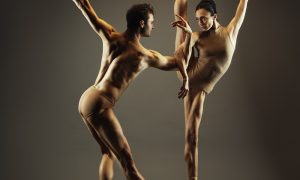While the word “privilege” itself has been the topic of many discussions recently, the principle is not novel. I would like to share a hard lesson I learned a few weeks ago with my Dance Informa community. I have run a group on Facebook for over 12 years now — a group dedicated to advocating for and showcasing the field of dance/movement therapy. (Dance Therapy Advocates; I encourage you to check it out.) Since it is just a group and not a formal organization, I have never actively issued any public statements or taken a stand on any social causes or issues. As I thought about it more, I assumed that if I didn’t stand for any particular cause, that I stood for every cause; essentially, neutrality meant equality for all. After being called out in this group for not publicly using my platform to voice injustice, it got me thinking about my association with power and privilege. And in true movement therapy fashion, naturally I wanted to explore how this showed up in my body.
Throughout this online confrontation, I recognized defensiveness, shame, guilt and anger. I began to notice how my defensiveness was embodied, how it physically manifested itself. I noticed how being exposed made my posture shrink and how my need to explain myself or correct a mistake, unintentional as it may have been, left me feeling as if I was on the edge of my seat and jittery like I had ingested five cups of coffee. The shame, guilt and anger often associated with white fragility each had their own distinct embodiment. I wondered if I began to recognize these movement qualities when faced with such serious and difficult subjects like racism, could I harness this awareness and create a space for learning, growth and even change? If I can pause and notice what is coming up, I can then own my emotions and my inherent privilege.
In a webinar I recently attended, Carmen Marshall said, “Intention does not override impact.” To me, that suggests that no matter how good your intentions are, your words and actions still have consequences, and the impact of those “good intentions” finds its way to the receiver’s body. I began to wonder how that impact was housed in the body. How had my words, or lack thereof, influenced someone else’s movement? The trouble with today’s communication is that I may not get to see that person’s body because most of these interactions are online. Since I cannot see the person’s reaction, I must try to empathize through self-awareness, putting myself in that person’s shoes and noticing how my body reacts and how my movement changes.
I’ve realized that it’s not just about recognizing your power and privilege but about using it. I’ve come to understand that having privilege may not be in my control. It may be something we are born into, but that doesn’t mean we are exempt from the responsibility that comes with it. In the words of Spiderman, “With great power comes great responsibility.” Whether we realize it or not, it is up to each individual to self-reflect on the association with power. Just because we are not abusing our power and privilege doesn’t mean we are doing our part to recognize and dismantle it.
I began to think of this in terms of where I choose to move. Not only do I have the privilege to move and dance in this world, but I am seen by my peers, mentors and colleagues. This is not guaranteed to everyone — whether it is because of the color of your skin, religious affiliation, physical difference or gender identity, to name a few examples. Even how we move in this world, where we move, and who we move with without fear of harm or death, is a privilege.
With regard to privilege, I have been given permission to “sit in the discomfort” more times than I can count. The thing is that just mentally “sitting” in discomfort is not enough. It is vital that we allow ourselves to feel uncomfortable in our body. So how can we do that? Here are four steps to acknowledging the body’s response to power and privilege.
#1. Notice your posture.
Does it change when your power it challenged? What is your posture when you feel powerful or when you feel powerless?
#2. Recognize movement patterns around privilege.
Do you lean in (advancing) as if to fight or lean back (retreating) to run away? Notice how you engage in factors like space and time. Become aware of your relationship to movement when the subject of privilege is brought up. Do you shrink or “show up” in your body?
#3. Pause before taking action.
Allow your body and mind time to pause before jumping into action. Whether it is defensiveness or camaraderie, a breath to evaluate and notice your gut response can make all the difference in how you take action and how the action is received.
#4. Challenge and diversify your movement.
In order to increase empathy and understanding, find ways to build your “movement vocabulary”. The more we diversify our movements, the more able we are to sit in others’ points of view regardless of how different they are from our own.
Finally, if you find yourself being silent, notice what is under the silence. Fear of making a mistake? Looking foolish? Shame? These are all valid emotions, but unless we are willing to have these important conversations, those feelings will just continue to fester. We must be willing to sit in the discomfort and have difficult conversations in order to allow for growth and change. I thank all the individuals who challenged my role in power and privilege. I hear you and I move with you and I will not stay silent anymore.

By Erica Hornthal, LCPC, BC-DMT, Dance/Movement Therapist.
Erica Hornthal is a licensed professional clinical counselor and board certified dance/movement therapist based in Chicago, IL. She received her MA in Dance/Movement Therapy and Counseling from Columbia College Chicago and her BS in Psychology from the University of Illinois Champaign-Urbana. Erica is the founder and CEO of Chicago Dance Therapy, the premier dance therapy and counseling practice in Chicago, IL. As a body-centered psychotherapist, Erica assists clients of all ages and abilities in harnessing the power of the mind-body connection to create greater awareness and understanding of emotional and mental health. For more, visit www.ericahornthal.com.















